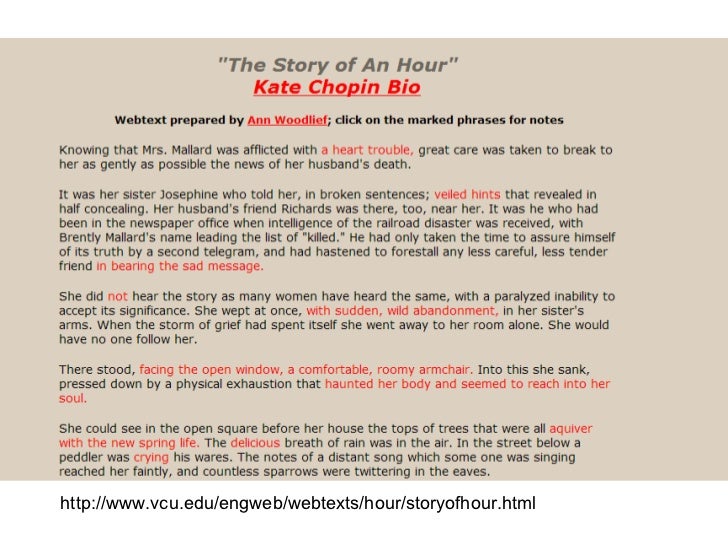

From everything we can tell, Chopin did not try to send “The Storm” out to editors. Q: Isn’t the phrasing of “The Storm” sexually explicit for something written in the 1890s?Ī: Yes, the phrasing is way beyond what any respectable American magazine, even a comparatively advanced magazine like Vogue (in which Kate Chopin published nineteen stories), would have printed at the time. Some anthologies print “The Storm” alone. The earlier story describes how Calixta came to marry Bobinôt and how Alcée came to marry his wife. Q: The story’s title says it is “A Sequel to ‘The ‘Cadian Ball.'” Does “The Storm” stand by itself or does it need to be read with the earlier story?Ī: It stands by itself, but some scholars have argued that Chopin obviously intended for “The Storm” to be read with “At the ‘Cadian Ball” and that resonance is lost when they are separated ( see one of the questions below). You can search the titles in our extensive databases of books and articles for more information about this short story-information in English, German, Portuguese, and Spanish. The evidence seems to show that the bulk of this one short story is copied from a non-fiction source- an 1891 article by Alcée Fortier called ‘The Acadians of Louisiana and Their Dialect.’” Geraldine Seay “New evidence seems to show that Chopin was indeed a creative author, but perhaps had more help than we imagined. Margot Sempreora re-examines the impact translating Guy de Maupassant’s stories had on Chopin’s work and demonstrates the transformation in her writing through the earlier short story “At the ’Cadian Ball” and her post-translation sequel “The Storm.” She concludes that the character of Calixta demonstrates Chopin’s liberation through language. “An underappreciated part of Chopin’s extraordinary skill is her ability to subtly undercut bold but morally untenable positions that she has sympathetically represented.” Lawrence Berkove That within the compass of the story’s five pages Chopin offers, to varying degrees, the points of view of five different characters suggests no implicit consensus of vision but only a sense of fragmentation, a sense perhaps that with any significant situation points of view are as numerous as those involved and, further, that with many pieces of significant fiction readings are as numerous as readers.” Allen SteinĪlthough “At the ’Cadian Ball” and “The Storm” portray controversial relationships in a sympathetic manner, Chopin uses irony in the narration to comment on them from a moral standpoint. The plot is clear enough, but little else is. “From first chapter to last, ‘The Storm,’ is pervaded by ambiguity. Furthermore, Calixta’s concerns for Bobinôt’s physical dryness and Clarisse’s continued devotion to her husband prove the solidity of the marriages that are tested in this story.” Maria Herbert-Leiter After all, the two couples end where they began-happily married. “Through this story, Chopin seems to be arguing for human passion and desire, but not at the cost of marriage. Many consider “The Storm” an essential work. A few see the story as immoral and the two lovers as sinners. Some critics and scholars focus on issues of gender, ethnicity, or social class.


And you can read about finding themes in Kate Chopin’s stories and novels on our Themes page. You can check our lists of books, articles, and dissertations about Chopin at other places on this site. There are further details in some of the questions and answers below.

Other readers, scholars, and critics have found a host of themes, ideas, and subjects to write about in this story. She focuses here on sexuality as such, and to her, it is neither frantic nor base, but as ‘healthy’ and beautiful as life itself.” In this story, Seyersted says, Kate Chopin “was not interested in the immoral in itself, but in life as it comes, in what she saw as natural–or certainly inevitable–expressions of universal Eros, inside or outside of marriage. The emphasis is on the momentary joy of the amoral cosmic force.” Per Seyersted, a Chopin biographer, writes that “sex in this story is a force as strong, inevitable, and natural as the Louisiana storm which ignites it.” The conclusion of the story, Seyersted adds, is ambiguous, because Chopin “covers only one day and one storm and does not exclude the possibility of later misery. Apparently Chopin did not submit it to magazines because she understood that no editor at the time would publish a work as sexually explicit as this one. Unlike most of Kate Chopin’s short stories and both her novels, this story was not published until the 1960s, many years after it was written.


 0 kommentar(er)
0 kommentar(er)
